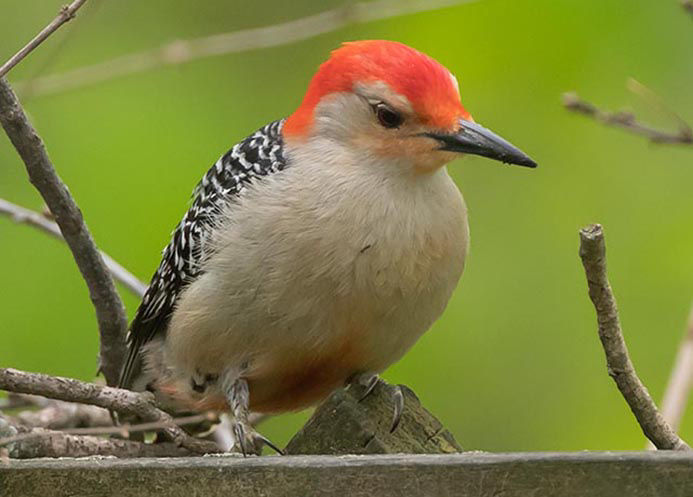Observing Woodpeckers in Florida: Types Variety and Distribution
Observing Woodpeckers in Florida: Types Variety and Distribution
Blog Article
Unveiling the Keys of Woodpeckers: Actions, Habitat, and Extra
Woodpeckers, with their one-of-a-kind behaviors and specialized adaptations, have actually lengthy captivated researchers and nature lovers alike. These exceptional birds have an array of intriguing keys that clarified their survival strategies, environment preferences, and intricate communication methods. By revealing the mysteries bordering woodpeckers' behavior and environment options, a much deeper understanding of these avian marvels emerges, supplying a glimpse into their fascinating globe. So, what makes these birds absolutely outstanding, and exactly how do they navigate their setting with such precision and ability? Let's check out the captivating world of woodpeckers and untangle the enigmatic information that make them such appealing subjects of research study.
Woodpecker Behavior Insights
In examining woodpecker habits, an interesting display of specialized skills and adjustments emerges, losing light on their remarkable environmental particular niche. Woodpeckers, recognized for their distinct drumming on trees, have a selection of behavior attributes that contribute to their survival and success in their setting.
Additionally, woodpeckers exhibit a special feeding habits identified by their capacity to remove pests from tree bark using their specialized beaks. Their lengthy, barbed tongues aid in capturing target, while their solid neck muscles supply security and precision during pecking motions. This feeding strategy allows woodpeckers to gain access to hidden insect larvae and remove them with impressive efficiency.
Environment Preferences and Selection
What elements influence the habitat choices and selection of woodpeckers? One vital factor affecting woodpecker habitat selection is the schedule of suitable nesting sites. Woodpeckers usually prefer forests with a mix of fully grown trees that offer ample possibilities for tooth cavity excavation.
Furthermore, woodpeckers reveal a choice for habitats with a bountiful supply of food resources. They are primarily insectivorous, eating beetles, ants, larvae, and other bugs discovered in worn out timber or tree bark. Therefore, woodpeckers tend to prefer wooded locations with a varied insect population to meet their dietary requirements.
Furthermore, the visibility of dead or decaying trees is another vital factor in woodpecker environment selection. These trees not just provide food resources however additionally provide ideal substrate for dental caries excavation. Dead trees are essential for the maintenance of healthy and balanced woodpecker populations, as they play a vital role in the woodpeckers' life process and community dynamics.
Feeding Routines and Diet Regimen Composition
Woodpeckers show a specialized feeding actions focused on foraging for pests within various habitats. In addition to insects, woodpeckers likewise consume tree sap, fruits, nuts, and seeds, adding selection to their my response diet regimen depending on the period and schedule of food sources.
The foraging techniques of woodpeckers are well-adapted to their arboreal way of life (Woodpeckers in Florida). Their ability to dig deep into timber not only supplies them with food yet also aids in developing nesting dental caries and developing territories. Woodpeckers play an essential function in maintaining the health and wellness of forests by regulating insect populations and aiding in the decomposition of wood. Comprehending their feeding behaviors and diet regimen make-up is important for preservation efforts focused on maintaining these distinct and important birds.
Drumming Appears and Communication
Using rapid drumming noises on various surfaces, woodpeckers use a distinctive kind of interaction to signal region limits and draw in mates. This drumming habits is not only a method of interaction however likewise serves as a way for woodpeckers to establish their visibility within a certain location. The strength, rate, and pattern of the drumming can share essential information to various other woodpeckers around.
Woodpeckers utilize drumming sounds to announce their visibility in an area and to advise off prospective intruders. The loud and repeated nature of the drumming works as a clear signal to various other woodpeckers that the location is currently claimed. This helps in decreasing conflicts and decreasing physical confrontations between individuals.

Survival Adaptations and Specialized Anatomy

Conclusion
Finally, woodpeckers show special habits, such as drumming audios for communication, and have specialized makeup for survival in their selected habitats. Their feeding routines and diet regimen make-up even more demonstrate their flexibility to different atmospheres. By recognizing these aspects of woodpeckers, scientists and guardians can better shield and protect these fascinating birds and their communities.
Report this page